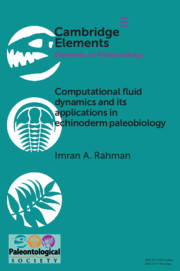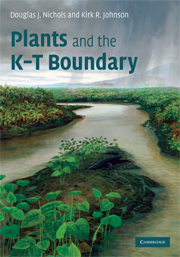Computational Fluid Dynamics and its Applications in Echinoderm Palaeobiology
Part of Elements of Paleontology
- Author: Imran A. Rahman
- Date Published: November 2020
- availability: This ISBN is for an eBook version which is distributed on our behalf by a third party.
- format: Adobe eBook Reader
- isbn: 9781108899338
Find out more about Cambridge eBooks
Adobe eBook Reader
Other available formats:
Paperback
Looking for an inspection copy?
Please email [email protected] to enquire about an inspection copy of this book
-
Computational fluid dynamics (CFD), which involves using computers to simulate fluid flow, is emerging as a powerful approach for elucidating the palaeobiology of ancient organisms. Here, Imran A. Rahman describes its applications for studying fossil echinoderms. When properly configured, CFD simulations can be used to test functional hypotheses in extinct species, informing on aspects such as feeding and stability. They also show great promise for addressing ecological questions related to the interaction between organisms and their environment. CFD has the potential to become an important tool in echinoderm palaeobiology over the coming years.
Customer reviews
Not yet reviewed
Be the first to review
Review was not posted due to profanity
×Product details
- Date Published: November 2020
- format: Adobe eBook Reader
- isbn: 9781108899338
- availability: This ISBN is for an eBook version which is distributed on our behalf by a third party.
Table of Contents
1. Introduction
2. Fluid dynamics
3. Steps in computational fluid dynamics
4. Examples in echinoderm palaeobiology
5. Emerging applications and future directions
6. Conclusions.
Sorry, this resource is locked
Please register or sign in to request access. If you are having problems accessing these resources please email [email protected]
Register Sign in» Proceed
You are now leaving the Cambridge University Press website. Your eBook purchase and download will be completed by our partner www.ebooks.com. Please see the permission section of the www.ebooks.com catalogue page for details of the print & copy limits on our eBooks.
Continue ×Are you sure you want to delete your account?
This cannot be undone.
Thank you for your feedback which will help us improve our service.
If you requested a response, we will make sure to get back to you shortly.
×



